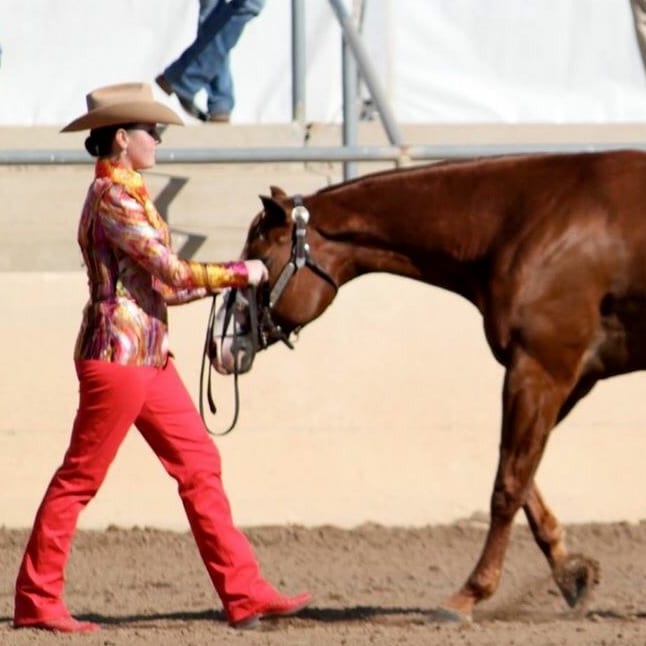You have to do it in almost every single class. It can be fast. It can be slow and cautious. It can be done on a circle, on a straight line, on a curve or around a cone. It can get the best of anyone, from the most seasoned showman to the rookie. It can be a make or break maneuver for scored events, or, sometimes, it can be a real showstopper that can steal you the win.
Have you figured out which maneuver we’re talking about yet? Here’s a hint for you: If you could turn back time or go back to the future, can you think again on a moment when you just needed to get back to the basics?
Alright, since that “hint” wasn’t all too subtle and given the title of this article, we’re guessing you’ve figured it out: backing. It’s a skill that’s required in virtually everything, and yet, nobody seems to discuss it all that much. Why, and how, should we back our horses?
GoHorseShow spoke with trainer Melissa Jones who, together with her husband Chris, trained both of the reigning AQHYA World Champions in showmanship. The demanding World Show patterns asked for a lot of backing, so read on for close inspection on the purpose of backing in the show pen.
Back to Basics
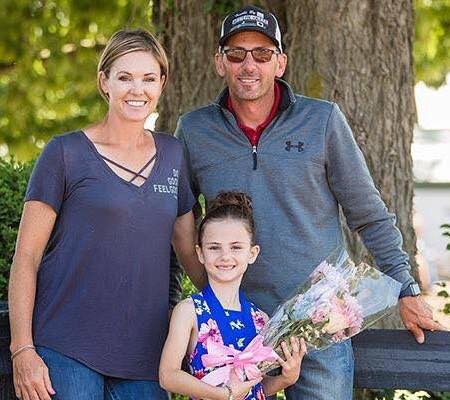 Even though backing is universally useful, to begin breaking down the purpose behind backing, we’ll start with showmanship. Jones says, “Starting with why we back in showmanship, well, that is just a fundamental of being a horseman. Every horse should know how to back for basic safety and handling purposes. For example, if you go to the vet and need to back out of stocks or need to back out of a horse trailer.”
Even though backing is universally useful, to begin breaking down the purpose behind backing, we’ll start with showmanship. Jones says, “Starting with why we back in showmanship, well, that is just a fundamental of being a horseman. Every horse should know how to back for basic safety and handling purposes. For example, if you go to the vet and need to back out of stocks or need to back out of a horse trailer.”
Jones adds, “When you are starting a young horse under saddle, you teach them how to back safely when you line drive.”
Moving on to under saddle events, backing under saddle is essential for the same foundational reasons. Moreover, from a training standpoint, teaching your horse to back is sometimes necessary. For horsemanship or ranch/reining events, it can help prepare a horse for better turns. Backing is essential for western pleasure horses and encourages suppleness and responsiveness to aids, while for trail horses, backing relates to the patience, caution and careful hoof-placement needed.
Jones explains, “Again, backing under saddle is a fundamental skill. There are times when you, as a rider, will need to be able to safely back your horse out of a situation. We back in trail classes because out on a trail you might have to back up. You might ride into a spot where you need to back out of and horses need that skill as a basis of their education.”
The bottom line: Backing a horse, whether you are on the ground or in the saddle, is an essential safety skill that every horse should have.
Backward Planning
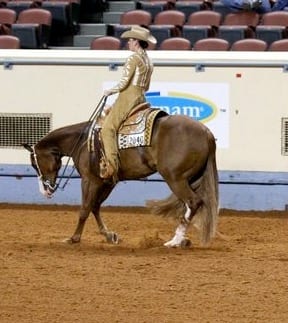 It’s one thing to recognize that backing is essential, but how do you train your horses to back lightly, correctly and willingly for the variety of events that will inevitably call on this skill?
It’s one thing to recognize that backing is essential, but how do you train your horses to back lightly, correctly and willingly for the variety of events that will inevitably call on this skill?
Jones advises, “Go slow. Just like anything, you have to go out and decide you’re going to work on backing that day. Be slow and encourage your horse to keep their neck stretched out. If you’re working on the back from the ground, don’t punish your horse with the chain, but teach them slowly to move off of your body.”
Jones compares this to working with a pleasure horse, saying, “When pleasure horses give their chin, a correct response [to your pressure] isn’t bumping their chin to their chest. When you’re working on teaching a horse to back, don’t push them faster than what they’re ready for. Teach them to move off your body rather than getting them to back off the chain and don’t go through the steps faster than what their body can handle.”
Like in all other aspects of showing, some horses come to the skill of backing with more natural ability than others.
Jones shares, “Some don’t have a good balance in the back at first. They might take too long of a step with their back feet or get too wide. Go slow and don’t get them to a spot where you’ve pushed them too far. Work on straight lines and maybe backing around corners. For the ones that aren’t good, don’t rush the process.”
The bottom line: Go slow to go fast. Before you can power-back in showmanship or master a tough trail course obstacle, you need to focus on teaching your horse to back correctly and softly.
Showing it Off
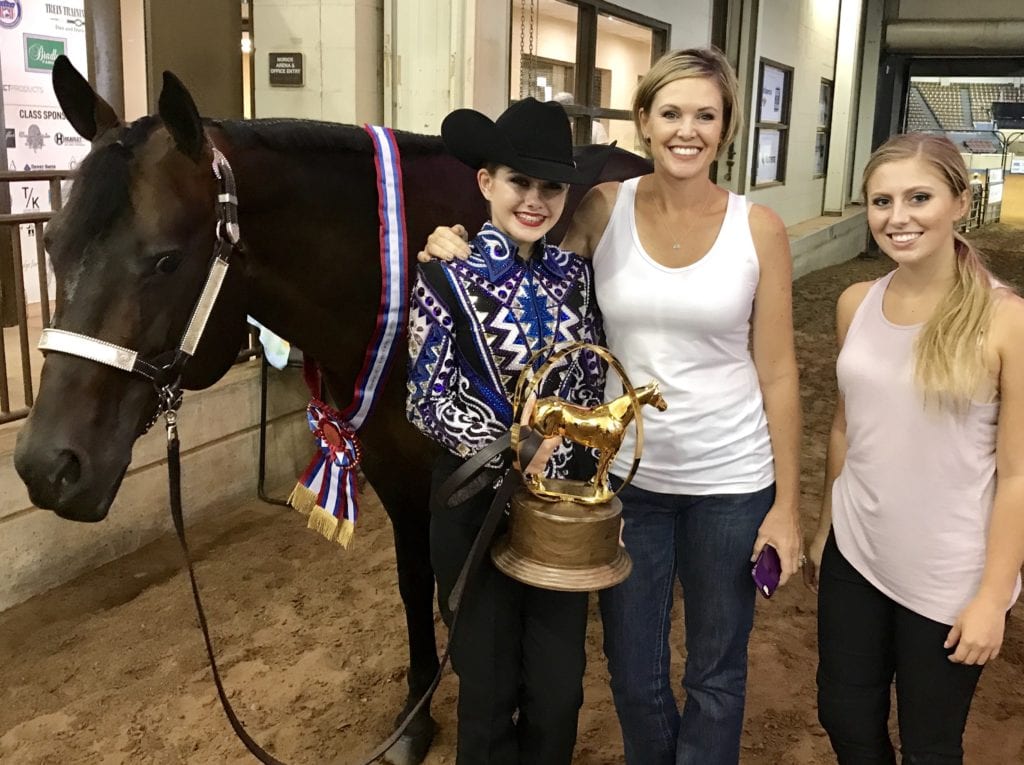 Once you’ve mastered the back at home for your chosen event, you’ll want to think about how to correctly and artfully demonstrate this skill when it’s called for in the show pen. As mentioned previously, Jones works with two youth competitors who each won Gold globes at the 2018 AQHYA World Show. Both exhibitors’ horses excel at the back, which undoubtedly helped them in achieving top scoring runs.
Once you’ve mastered the back at home for your chosen event, you’ll want to think about how to correctly and artfully demonstrate this skill when it’s called for in the show pen. As mentioned previously, Jones works with two youth competitors who each won Gold globes at the 2018 AQHYA World Show. Both exhibitors’ horses excel at the back, which undoubtedly helped them in achieving top scoring runs.
Jones explains that while her clients do back with speed, that’s not what is so good about their backing, “In recent years, there’s more of an emphasis on backing and I see a lot of people now who want their horses to back up fast. Many times when that happens, you will see that [exhibitors] are in an incorrect position. They have closed the gap between their body and the horse’s chest or are directly in front of the horse. Going back to the fundamental purpose of backing, if I’m backing a horse out of a trailer and it isn’t backing, it isn’t safe to put myself that close to the front of the horse.”
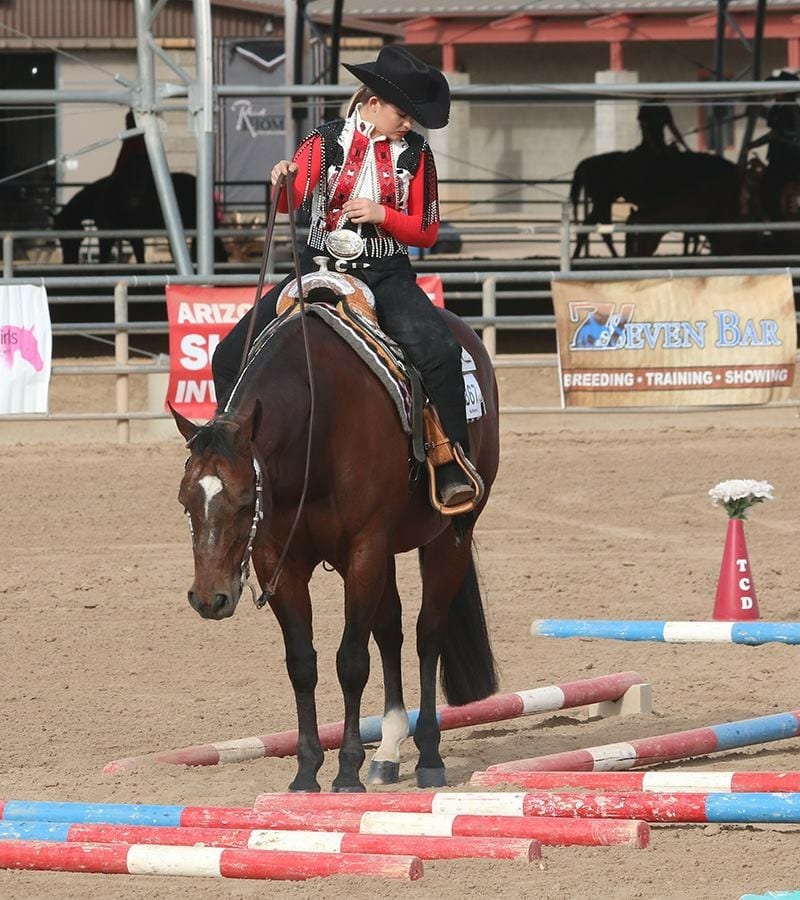 Jones continues, “You need a correct back before you add pace. It shouldn’t be about how fast you can back; it should be about how correctly you are backing. Stay in position. We need to understand backing [in Showmanship] isn’t all about speed. My girls did have speed in their back, but it was a correct back.”
Jones continues, “You need a correct back before you add pace. It shouldn’t be about how fast you can back; it should be about how correctly you are backing. Stay in position. We need to understand backing [in Showmanship] isn’t all about speed. My girls did have speed in their back, but it was a correct back.”
Moving on to backing in trail events, Jones doesn’t notice any significant trends that are dominating, however, again offers up the advice to go slow while showing. She shares, “For me, for the trail, if you get too fast, bad things happen. You need to go one step at a time and have your horse waiting on you. The more a horse does those back obstacles, the more they want to anticipate it and do it on their own, so you need to focus on not going to fast.”
The bottom line: First, be correct.
About the Author: A native Michigander, Rachel Kooiker is a lover of horses who loves to write. She competes in all-around Amateur events with her APHA gelding, Hoos Real. She graduated from Grand Valley State University with a BA in English and Psychology and an MA in Curriculum & Instruction. She and her husband Drew operate Kooiker Show Horses, home of APHA World Champion Im the Secret.
Photos @ Karen Graham, GoHorseShow, Kaleena Katz Weakly


